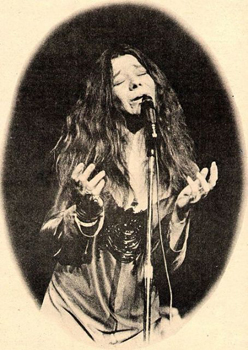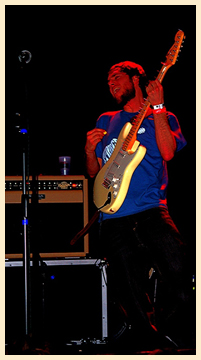Gallery 21, Rock n'Roll
< Return to Gallery 21 Go to Gallery Index >
| Long live Rock and Roll. It was 1956, and I was about 9 years old when Bill Haley and the Comets scored big with their hits "Shake Rattle and Roll" and "Rock around the Clock" I remember listening to those tunes and enjoying them, but it was Elvis Presley's versions of "Don't be Cruel" and "Hound Dog" that really caught my attention and launched me into a lifetime of listening to rock in all of it's many forms. Rock is as uniquely American as football and mom's apple pie, and after more than 50 years it has become a permanent fixture on the American scene. Rock, of course, hasn't stood still in the last 50 years. The variations and metamorphoses of this music are endless. The basic formula, however, remains the same - lead guitar, base guitar, drums, vocalist(s), maybe a synthesizer and, sometimes, just about any other instrument you can think of, up to and including full orchestral backup. Back in the 50s and early 60s there were a number of groups that would have simply died on the vine if it hadn't been for that ever present background baritone sax. When that sax was occasionally let loose to do a wailing improvisation, we were all reminded that one of the roots of rock and roll was jazz. It doesn't matter how it is done. Whether it's a full compliment of violins or a throaty sax solo in the mix, as Billy Joel famously intoned, "It's still rock and roll...." |
 Joplin, Fan Pix Photo
<visit> |
As a visual art, rock and roll is probably best viewed live or on video. Stills of rock artists simply don't do this art form any real justice in my opinion. There are, however, a few memorable stills from my youth that succeeded in visually capturing a sense of what could be heard. Blues singer Janis Joplin's portraits, for example, are memorable for the simple reason that nearly all of them hint strongly at her smokey, unforgettable, Southern Comfort-soaked voice (left). When someone looks like that, they just have to sound a certain way, and, in fact, that's just how she sounds. On reflection, it seems to me that rock and roll photography must always keep in mind the idea of promoting an artist or group and must therefore be judged on how the aesthetic aspects of an image help to support it's promotional value. Most of the time the images are to be used for web displays, poster art, CD covers and enclosures. It's not about capturing pretty pictures just to cover bare walls; it's about selling the music, something that is pretty tough when a poster or CD cover doesn't actually allow you to hear the thing that is being sold. It is only after the singer or musician has become a national icon that the images can be sold simply as artwork. These days, you can find wall-display-sized portraits of Elvis Presley for sale at places like Amazon for fairly pricey sums. Some people, I guess, just like to have a classic picture of "The King" hanging in the ol' family room, but generally it's all about getting the viewer to imagine they can hear the music and to want to buy it. |
Back in 2008 I was invited to do some promotional ideas for a popular alternative rock group in Denver called "Vices I admire." The photos were to be taken without instruments, just showing the group in various poses around Denver. I had fun doing the shoot and creating some ideas, some of which may be seen <here>. Members of the group said they liked the pictures, but I suspect they may have seen them as somewhat "old school" and too traditional. There seemed to be something missing, and I realized it was the instruments. Fortunately, I was invited back to shoot some additional pictures at a CD release concert at Denver's Bluebird theatre on January 1, 2010. I found these pictures to be personally much more satisfying. Some of the photos are informal images of backstage moments before the Vices' concert, while others were obviously taken during the performance. Photographing rock concerts is tricky. Drummers are difficult to capture because they are behind everyone else at the back of the stage as well as behind their drums. Some concert images, I believe, could be illuminated better with off-camera slaves that could be pre-positioned and independently triggered, allowing the audience to remain in silhouette. If the stage was more brightly lit, or if there were spotlights, a lot of things could simply be captured without flash, using high ISOs and fast lenses. It is great to get pictures of audience reaction, but this involves virtually getting on stage with the band to shoot from behind, and there is a limit to how much of that can be done without being too intrusive during a concert. I suppose that my own personal favorites from the Vices CD release concert were image #246 of singer/ guitarist, Mickey Dollar (at right) and lead singer, Dave Curtis, image #242 <here>. I also like the backstage image #235 <here> of Dave Curtis coaxing a note from guest singer Kyle Simmons with his left hand during some informal rehearsing. The picture of percussionist Mark Towne seen <here> is also pleasing for me. People who are interested in hearing this group can link to their website <here>. |
 Dollar, Vices I Admire
Curtis Photo |